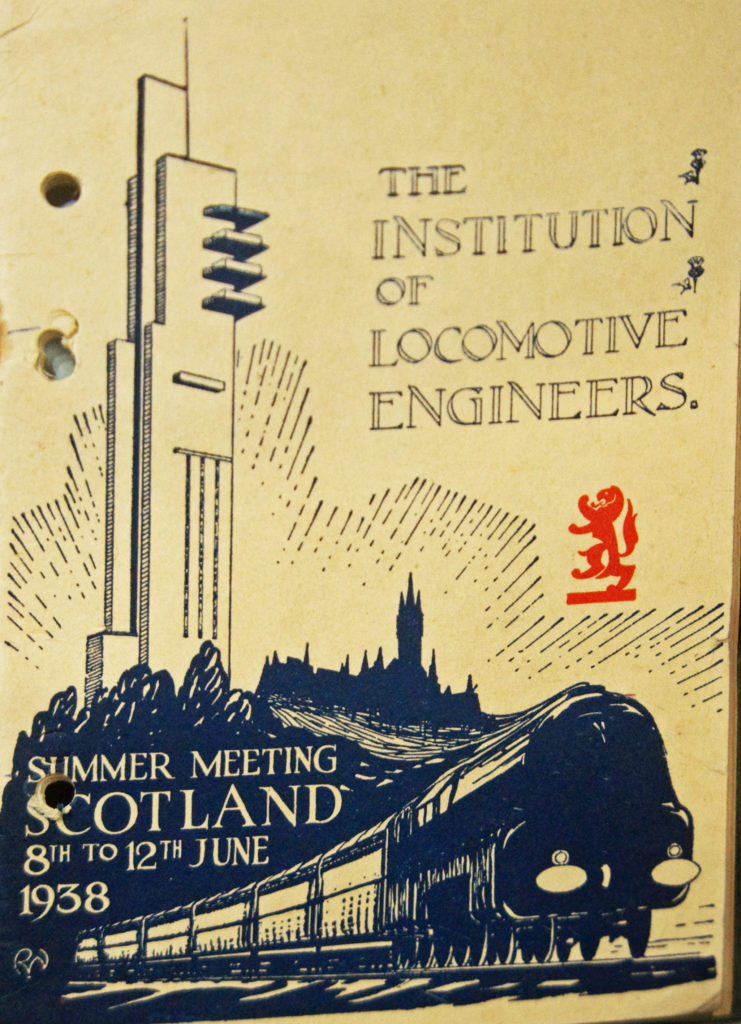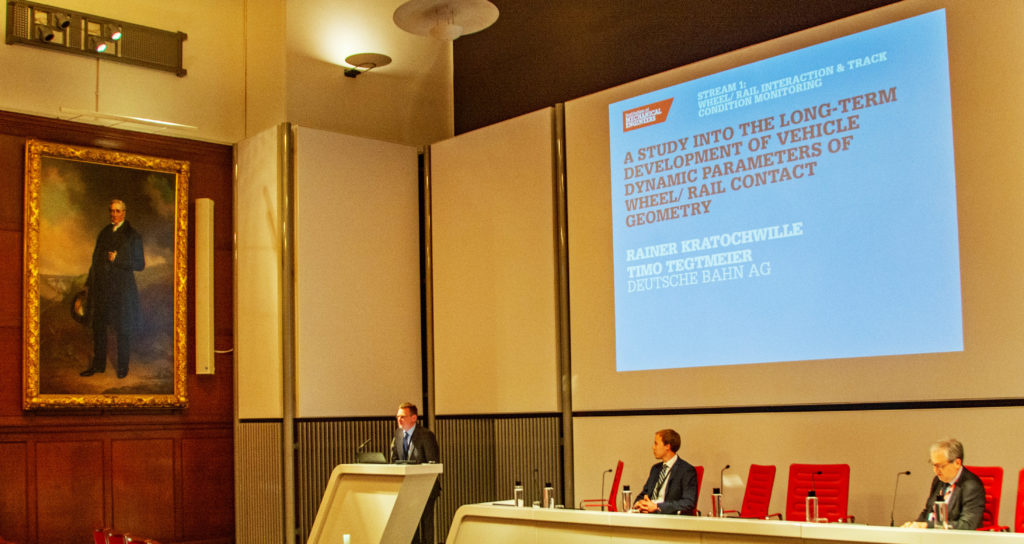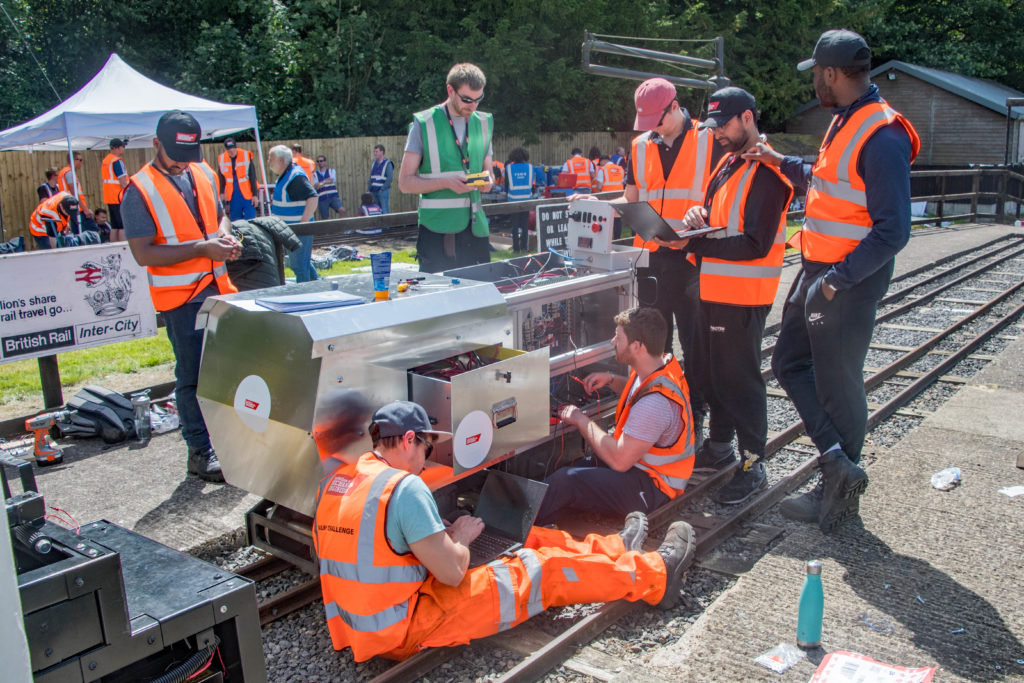This latest feature in our series on railway-related professional engineering institutions considers the Railway Division of the Institution of Mechanical Engineers (IMechE).
Currently, there are 37 institutions licensed by the Engineering Council to register professional engineers. The Institution of Civil Engineers was the first, founded in 1818 with the aim of “directing the great sources of power in nature for the use and convenience of man.” In an age when everything was moved by muscle power, engineering was primarily concerned with the built environment.
With the rapid development of steam power, in 1846 a meeting was held in Birmingham to consider the formation of an institution made up of mechanics and engineers engaged in “Manufactories, Railways and other establishments”. The aim was to discuss and exchange ideas to improve knowledge across the various “branches of Mechanical Science”; and to give an “impulse to inventions likely to be useful to the world”.
The following year this led to the formation of the UK’s second engineering institution, the IMechE, and the appointment of George Stevenson as its first president. In 1877, the IMechE moved from Birmingham to London, where it had built its current headquarters at Birdcage Walk, which opened in 1899.
In 1909, the IMechE founded its first international branch in Kolkata, India, though UK local branches were not formed until 1920. In 1930, King George V signed the Institution’s Royal Charter allowing members to refer to themselves as Chartered Mechanical Engineers.
In a reflection of changing attitudes of the time, in 1918 a woman spoke at an IMechE meeting for the first time on ‘The employment of women in munition factories’. The Institution saw its first female member in 1924.

ILocoE
By the late nineteenth century there were around 1,200 mechanics’ institutes set up by public subscription and local benefactors. These provided classrooms and libraries to educate the working man to tend, repair and improve the complex machinery that drove the industrial revolution. These institutes supported self-improvement groups, including those formed at major railway centres.
In 1909, the Stephenson Locomotive Society was formed to cater for railway institutes. However, some felt that the society did not adequately address technical issues and led a breakaway group to form a new society in 1911, the Institution of Locomotive Engineers. Its principal objective was “The advancement of the science and practice of Locomotive Engineering by enquiry, experiment or other means; the diffusion of knowledge regarding Locomotive Engineering by means of lectures, publications, exchange of information and otherwise; the improvement of the status of the Locomotive Engineer.”
Membership and activities rapidly expanded with the first regional centres being established in Leeds (1918), Manchester (1919), and Glasgow (1920). Presentation and discussion of papers at each of these centres was an important activity. From 1915 the papers were published in the ILocoE’s journal, which reported the discussions verbatim. By 1921, its membership numbered 1120 and the ILocoE had created a library. From the start, it ran a full programme of UK and overseas visits and social events, such as the annual luncheon.
The ILocoE had a particular interest in overseas practice and developed international connections. Indeed, the first paper presented to it on 27 May 1911 was about French locomotive practice. Later that year there were visits to Belgium, Austria, and Germany. In 1920, the first overseas centre was established in Buenos Aires. Around this time ILocoE representatives were appointed in India, Nigeria, South Africa, and China.
An important forum
The ILocoE provided an important forum between Britain’s manufacturing industry and the engineers running its railways. Presidential addresses showing the value of this forum included those by Richard Maunsell (1916) and William Stanier (1938) who both highlighted maintenance problems from poor design. Maunsell’s strong views are reflected in his paper’s conclusion: “the engineer instinctively looks for the prominence of details which he knows should be accessible and he rightly regards as a monstrosity a machine which is lacking in this respect.”
Meetings with railway infrastructure engineers date back to the first joint meeting with the Permanent Way Institution in 1928, when Harold Holcroft presented his paper “Some points of common interest in Rolling Stock & Permanent Way”. In 1949 the first meeting with the Institution of Railway Signal Engineers was held when author Oswald S Nock, presented his paper “The relationship between Signalling and Brake Power in the Handling of Modern Traffic”.
Six of the ILocoE’s presidents, including Nigel Gresley, William Stanier, and Oliver Bulleid, also served as IMechE presidents, a reflection of the close links with the IMechE. Other presidents were from Britain’s locomotive manufacturing companies, such as the Vulcan Foundry, Beyer Peacock, Hunslet, English Electric, and the North British Locomotive Company.
The ILocoE responded to the many organisational, industrial, and technical changes faced by Britain’s railways. In 1948, nationalisation brought about common locomotive maintenance practices. This followed President Lt-Col Harold Rudgard’s address “Organising & Carrying Out of Examinations at Running Sheds in Relationship to Locomotive Performance and Availability”, which had outlined LMS practice which was soon adopted throughout British Railways.
The 1950s onwards were a challenging time, with diesel and electric motive power replacing steam and the introduction of specialised rolling stock. The ILocoE provided support as its engineers adapted to these changes and, in 1957, widened its scope to include carriage and wagon engineering.
Britain’s once strong locomotive manufacturing industry had provided the ILocoE with a great deal of support. However, with its decline in the 1960s it became clear that the ILocoE could not continue as an independent body and so, in 1969, it became a new division of the IMechE.

Today’s Railway Division
The IMechE’s Railway Division continued the traditions of the ILocoE with a thriving programme of technical presentations, its annual luncheon, and technical tours abroad. With the globalisation of the rail industry, it arranged visits well beyond Europe to Singapore, Malaysia, USA, Japan, and China. These tours offer the opportunity to learn from foreign practice and had a mix of senior engineers and young engineers who would also learn from each other.
The Division also continued to present pertinent papers. With the new motorway network, railway engineers developed the Inter City 125 to combat increased competition from the car. The spirit of this time was exemplified by Bruce Sephton’s 1986 Chairman’s address entitled “Railways Do or Die?”.
Today, the Railway Division has a membership of around 5,000 and runs an extensive programme of lectures and seminars at its HQ and seven Regional Centres (Midlands, Milton Keynes, North East, North West, Scottish, South East, and South West). It also has a young members section which runs a presentation competition for developing professionals, with a prize awarded for the best paper.
The Railway Division was formed around the time of the inauguration of the Britain’s first AC electrified inter-city services on the West Coast Main Line. With increasing electrification since then and, in recent years, the introduction of digital signalling, it is no longer appropriate to consider trains in isolation as the ILocoE generally did. With increased focus on whole system engineering, the Division’s focus reaches far beyond rolling stock and so considers issues associated with electrification and signalling. In this way, members of the Division are associated with all aspects of railway engineering and, generally, are no longer solely concerned with mechanical engineering.
In 2012, the Division started to run its Railway Challenge. This was inspired by the Formula Student Challenge run by the IMechE’s Automobile Division. The challenge requires teams to design and build a 10 ¼ inch gauge miniature locomotive. These are then put through a series of trials at the Stapleford Miniature Railway near Melton Mowbray which include traction, ride comfort and energy storage recovery during braking. The teams are also marked on the design of the locomotive and their business case presentation.
In this way, these young engineers face many real-world operational, design, and project management problems. To date, 70 teams have participated in the 10 challenges that have taken place in late June. This has provided around 500 young engineers with a great opportunity to gain experience of technical and organisational skills such as project management and team working in a tight time frame.

Continuing traditions
The IMechE’s Journal of Rail and Rapid Transit attracts research papers from around the world and complements more general presentations at Railway Division meetings. During the Covid pandemic these were held online with the result that recordings of these events are available online in the Railway section of the IMechE’s Webinar Hub.
The Division continues to act as a learned society promoting best practice in railway engineering, including new rolling stock, international standards, and research and development. Its programme encourages the development of today’s engineers, as does its annual technical tour and prizes awarded for papers and innovations. The Division’s popularity is such that its annual luncheon is held in London’s only hotel that can provide for over a thousand attendees.
Two of its past chairs − Tony Roche and Carolyn Griffiths − have also become IMechE presidents. In this and other ways, the IMechE’s Railway Division is continuing the traditions which were started over a hundred years ago to promote railway engineering excellence as well as attracting and supporting the next generation of railway engineers.

